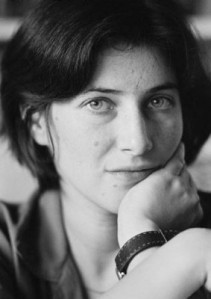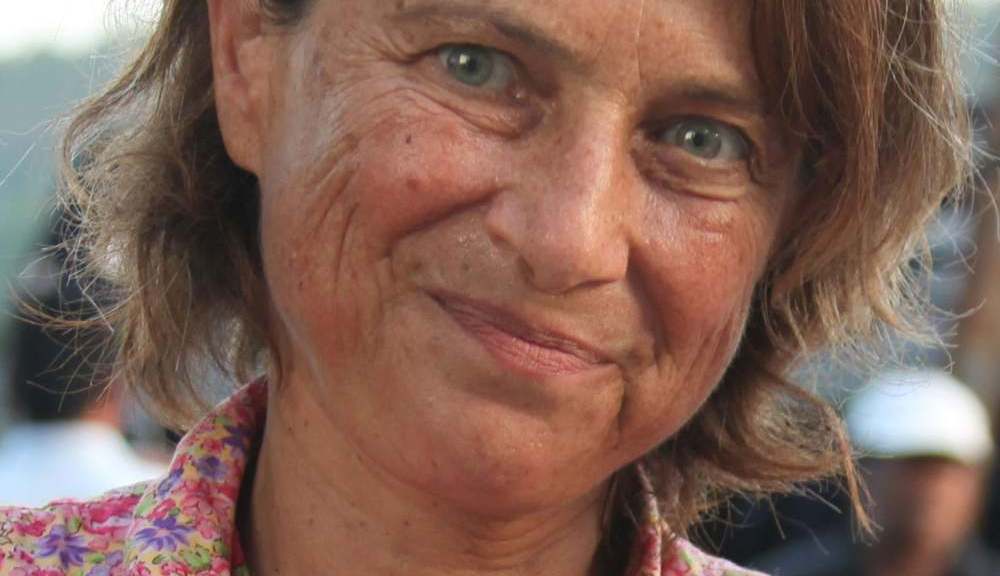As much as we love our Netflix accounts here at Cinephile City, there’s a certain experience you can have only when you see a film live and in person. Theatrical Experiences is an occasional series in which we tell our best/worst/creepiest/funniest stories of going to the movies.
 Around two-thirty on a sunny Sunday afternoon in 2012, Chantal Akerman stepped out of a car with a grin as wide as one of Chris Marker’s cats. The famed Belgian director looked at the long line of people waiting to enter the Light Industry, an independently run alternative art space in New York City, for a rare showing of Michael Snow’s La Region Centrale. “Wonderful! It’s so good to see so many people! You will all love it!” She walked down the line smiling and waving, shaking our hands, exuberantly excited to introduce a film she considers one of her greatest influences. She then entered the theatre, and we waited outside with the type of electric anticipation usually reserved for tweenagers at a midnight showing of the latest YA franchise.
Around two-thirty on a sunny Sunday afternoon in 2012, Chantal Akerman stepped out of a car with a grin as wide as one of Chris Marker’s cats. The famed Belgian director looked at the long line of people waiting to enter the Light Industry, an independently run alternative art space in New York City, for a rare showing of Michael Snow’s La Region Centrale. “Wonderful! It’s so good to see so many people! You will all love it!” She walked down the line smiling and waving, shaking our hands, exuberantly excited to introduce a film she considers one of her greatest influences. She then entered the theatre, and we waited outside with the type of electric anticipation usually reserved for tweenagers at a midnight showing of the latest YA franchise.
The program was set to begin at three, but we were not let into the Light Industry’s small theater space until around 3:20. The Light Industry is a box studio, an experimental art space rather than a theatre proper. Folding chairs were set up in the middle and benches line the sides. In the back of the room, two 16mm cameras were set up on a table to be projected onto a white wall – there was no traditional screen.
Chantal Akerman was sitting in front of the white wall; her wide grin was now a languorous frown. As I took a seat, front row center, one of the Light Industry programmers was kneeling down whispering to her. I heard her reply, “I’m very angry.”
The room began to fill up, and Akerman glanced at a man looking for a seat. “Sit close,” she directed, “up front. In the center.” He sat down next to me, and his head towered above mine. “Oh no!” Akerman lamented. “You are too tall. You must move back. How will others see?” The tall man started to stand. Akerman changed her mind. “Never mind. Sit back down. The image is so high, so small … it doesn’t matter.”
At this point it was hard not to link Akerman with the eponymous character from the film she wrote and directed, Jeanne Dielman, 23 Quai du Commerce, 1080 Bruxelles. Like Dielman, Akerman seemed obsessed with things having a specific place, a necessary order. She was expecting a traditional theater for La Region Centrale, in part because her first experience with that film was a 1971 showing at the Anthology Film Archives in New York. Michael Snow himself had ensured barriers were placed between people at that screening, so audience members would not be able to distract one another. Their focus would lose autonomy to Snow’s authoritarian presentation. Akerman would describe the experience as, “a trip, I was lost in the image. Not only lost … but not lost.”
The most iconic moment of Jeanne Dielman comes when Jeanne forgets to replace the lid of a jar she keeps her money in. Akerman builds to this by stretching standard cinematic pacing. She establishes Dielman’s fastidious routine so thoroughly that when the lid is left off the jar, everyone in the theater gasps. Dielman quickly returns and replaces the lid, but the interruption becomes a turning point for the character. The Light Industry’s presentation of La Region Centrale was a lid Akerman could not place back on. As she began her speech she repeated, “I am very angry.”
The programmers attempted to give Akerman an introduction, naming some of her films, but Akerman interrupted. “None of my films will ever play here. Never. Never.”
The programmers tried to continue, but were interrupted again, as Akerman asked the audience, “How much did you pay for this?”
A few voices uttered, “Seven dollars.”
 Akerman multiplied the seven dollars by the ninety or so people in attendance and faced the programmers again. “You have made over $500 off of these people. The least you can do is to take that money and buy a box to mute the sound of the projector.” She went on to describe the unforgivable interruption this would cause. “This film should take up THE WHOLE SCREEN,” she waved her hands across the white wall, and began a presentation manifesto: “And this is not even a screen, is just a wall. Maybe with the right paint, but not … this. There is too much distance. When I saw it we were in the film, it was projected so big. Because it was a piece of art. It is a piece of art, and the best it has to be screened. This is a stamp post. Is that how you say? A post stamp.”
Akerman multiplied the seven dollars by the ninety or so people in attendance and faced the programmers again. “You have made over $500 off of these people. The least you can do is to take that money and buy a box to mute the sound of the projector.” She went on to describe the unforgivable interruption this would cause. “This film should take up THE WHOLE SCREEN,” she waved her hands across the white wall, and began a presentation manifesto: “And this is not even a screen, is just a wall. Maybe with the right paint, but not … this. There is too much distance. When I saw it we were in the film, it was projected so big. Because it was a piece of art. It is a piece of art, and the best it has to be screened. This is a stamp post. Is that how you say? A post stamp.”
The programmers tried to defend themselves; they spoke of alternative film spaces throughout history I thought of Henri Langlois, who staged legendary film screenings in his staircase. They tried to move Akerman away from a dichotomy and into a difference of opinion, but Akerman wasn’t having it. “It is my opinion and it is true,” she declared, “If Michael knew … if he knew how his art was being treated … I think he will die! If he saw this, he would die here.”
The programmers looked annoyed and hurt, and whenever they would try to explain Akerman would again express her disgust. Finally, a man from the audience shouted, “Shut up! We get it.” Akerman stopped her tirade and said a few words about Michael Snow and the film she was, reluctantly, there to introduce.
She also mentioned Back and Forth, Snow’s film in which the camera pans left to right in a small classroom. Though it has no traditional narrative or characters, the mere act of panning the camera creates the anticipation of drama, which draws the viewer in. Akerman said, “The film has as much tension as a Hitchcock film.” I have seen Back and Forth and agree absolutely. As the pace of the pans increases, I began clenching my fists as if it was a great horror film. (The same technique was lifted for Paranormal Activity 3, with the spy camera placed on a rotating fan. The result wasn’t quite as effective, though it was the most interesting moment in the entire franchise.)
Akerman finally began to say a few words about La Region Centrale and its influence on her. She reiterated her idea that the experience of La Region Centrale should be an immersive one, then said something of how she was affected by it, “The film offered freedom.” She paused for a moment, perhaps noticing that the word “freedom” seemed to include the freedom to present the film in a venue such as the Light Industry, then: “But freedom with restraint. The idea was precise, and it gave the viewer freedom.” She spoke of how Snow’s experimental concepts removed the notion of what film could be, from the narrow confines of narrative.
Finally, Akerman took a sad look up at the wall, answered a few audience questions that indulged her disappointment with the venue, then left to head back to Paris for “another sad event.” As she left, the programmers reminded the audience that they would be screening Hated, the G.G. Allin documentary. They promised that Allin, the late punk singer known for cutting himself and eating feces on stage, would be a far less contentious presence than Chantal Akerman.
While walking out I overheard one of the programmers say, “You just haven’t made it as a curator until you’ve been berated by a legendary European director.”
